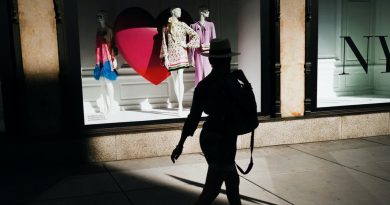Experience Matters in Commercial Real Estate – WWD
CANNES, France — Retail developers in Europe and the Middle East are ever more focused on growing the experiential quotient of their shopping destinations.
The coronavirus pandemic, which forced them to shutter locations for months on end, has given serious pause for thought and strategy reset, especially as e-commerce booms.
Executives at the Mapic retail real estate fair, which took place in Cannes, France, from Nov. 30 to Dec. 2 after a two-year hiatus, homed in on mixed-use developments, combining shopping with the likes of offices, hotels, restaurants, gaming and other digital experiences.
“The industrial way of thinking about retail is over,” said Eric Costa, chief executive officer of Citynove, the real estate arm of Galeries Lafayette Group, referring to the long-standing cookie-cutter approach that he deems ineffective today.
Meanwhile, business is generally bouncing back, with executives at Mapic noting sales have returned to at least 70 percent of the pre-pandemic levels generated in 2019, even if international travelers remain largely absent due to ongoing travel restrictions.
In November, New West End Company, which represents some 600 retail, restaurant, hotel and property owners in London’s core shopping areas, was at 80 percent of pre-health-crisis footfall levels, according to Alice Murphy, head of partnerships. Before the virus hit, 70 percent of people walking New West End properties would be from the U.K. The 30 percent from abroad generally drove about 65 percent of sales.
“Footfall is stabilizing, and we’ve had a huge uptick in our average spend [of more than 11 percent],” said Nick Brady, group managing director, leasing, at McArthurGlen Group, which has 26 designer outlets in 10 European countries.
Pre-pandemic footfall levels won’t likely to return until international travelers do.
“We’re expecting that will come next year, probably in the second half of 2022,” said Murphy, forecasting that the effects of events like Queen Elizabeth’s Platinum Jubilee and the Commonwealth Games will be felt in the U.K.
Attendance was down significantly at Mapic, with around 3,000 people walking the show, versus 8,200 in 2019. But the historic ratio remained of one-in-four visitors being a buyer.
“It was important to have this event because the idea is to restart and to bring Mapic into the future,” explained Francesco Pupillo, show director of Mapic Italy, LeisurUp and The Happetite. (The latter two shows-in-the-show include leisure and food companies, respectively, such as Hall U Need, Hofy and Zero Latency.) Altogether, there were 300 exhibiting companies.
Mapic organizers expect food and leisure will make up one-quarter of commercial real estate’s global mix in a few years, versus the nearly 7 percent in the recent past.
“All this under one roof is to create the new destination of tomorrow,” said Pupillo.
Executives at the trade show spoke of shifts already underway. McArthurGlen is opening new locations and upsizing with existing brand partners, while welcoming new labels into its outlets, such as Off-White, Givenchy and Stella McCartney.
“They’re new brands that we’ve been speaking to for years,” said Brady.
Via Outlets, with 11 European assets spanning more than 1,100 stores, has inked 355 deals this year, including with 135 new brands, said Jorge Sánchez Mera, head of leasing at the company. Among them are Ralph Lauren, Longchamp, Lyle & Scott, American Vintage, Reese Cooper and Hollister.
“[They’re] understanding the concept of the channel is a really good way of expanding the experience of the brand itself,” said Sánchez Mera.
Christopher Stone, head of retail at Via Outlets, called outlet stores the “gateway into the brand.” He emphasized deals have been brokered with the group’s existing partners, such as Michael Kors, for new stores or expansion, as well.
The pandemic has been a huge accelerator of trends that were already on the rise. An increasing number of people migrated to online shopping, for instance. (In 2018, e-commerce sales represented just 13.6 percent of total global retail sales, versus 18 percent in 2020 and an estimated 19.5 percent in 2021, according to Statista.)
In order to compete with e-tailers, brick-and-mortar locations must become more like smart phones — chockablock with a variety of elements — so people have good reason to leave home and not buy online.
A consumer survey carried out by Eurofund Group revealed that people’s biggest motivator for visiting a shopping center today is to meet family and friends — not to shop, according to Ian Sandford, CEO of the group.
“We don’t call ourselves a ‘shopping center’ — we call ourselves a ‘shopping resort,’ because a resort is where you go to spend time,” he said. “We’re in the hospitality business. We have to welcome 15 million people and give them the very best day out they can possibly have.”
The focus has been on design, sustainability and redefining the mix. Eurofund, which operates in Spain, Portugal and the U.K., opened in its Lisbon-based mall a 161,460-square-foot hospital, the first Marvel escape room and The Hood shopping village made of shipping containers selling a lot of street food. In that shopping center, the footfall in October and November was nearly 20 percent higher than in the same months of 2019.
The Hood from Eurofund.
“Outlets, absolutely, have become a true day out,” said Stone.
“We have to consider shopping in stores as a leisure activity,” maintained Costa, who quoted Galeries Lafayette Group executive chairman Philippe Houzé as saying: “’Digital is to save time, and stores are to spend time.’ Our relationship to time has changed because of digital.
“We have to redesign retail spaces,” added Costa. “If shopping is a leisure activity, we have to change the architectural codes of our projects and try to create places where you feel well and [relaxed].”
That can mean allotting more space. “The less optimization, the more optimism,” he said, explaining people need an optimistic mindset to shop.
So Galeries Lafayette Group started signing on architects new to retail, semiologists, symbologists and magicians, to evoke surprise and positive emotions in people. (One idea was for an elevator that doesn’t function unless someone smiles. The retailer is also trying out random acts of kindness to boost moods.)
Retail, Costa maintained, must shift from a transactional model to one that builds relationships with people, which could result in sales and profits. Providing shoppers with other activities — linked to dining, culture and health, for instance — is key to this.
To wit, Galeries Lafayette’s Boulevard Haussmann flagship in Paris will convert its 21,530-square-foot, minus-one floor into a health and well-being department next year.
Experiences are being layered into New West End’s developments, too, which will have a 5 billion pound capital investment over the next five years. Murphy noted 76 percent of developments are turning to mixed-use now, whereas in the past they had been retail-dominated. Office developments are starting to come through, as stores such as Superdry and Ikea open.
At the end of London’s Tottenham Court Road an Outernet — touted as the largest immersive screen in the northern hemisphere — will launch in December. Also on that road is Monopoly Lifesized, a 4D edition of the board game with a themed restaurant.
“The high street’s diversifying,” said Murphy. “It would be great to see more health brands and F&B — I think that’s really where we’re going to pivot.”
Sandford believes commercial real estate has big opportunities in the health, education and coworking spaces.
New West End has teamed with the Westminster City Council to create some pop-ups.
“This has enabled us to test new, exciting and innovative ideas,” said Murphy, citing as examples the Regent Street Edit, featuring six fashion and wellness brands, each with a sustainability focus. There’s also The Collect, on Oxford Street, around inclusivity and sustainability.
The Collect
Courtesy of New West End
Sustainability was top-of-mind for Via Nova, as well. It hosted and managed two pop-ups, called Re.Love, in Lisbon and Amsterdam, to showcase sustainable collections and initiatives from its brand partners.
Other leisure activities to be recently added to commercial real estate ventures are the 64,580-square-foot Play Land, the first water park to open in a European shopping destination, in McArthurGlen’s Designer Outlet Serravalle, near Milan.
Play Land at Serravalle Designer Outlet.
Courtesy of McArthurGlen
The group is working on a luxury outlet near Giverny in France that will include a Maison des Métiers d’Art showcase for local artisans, created with designer Mathieu Lehanneur.
While the new mixed-use developments are a great opportunity, executives say they can be contractually complicated.
“Unfortunately, contracts at the moment are totally inadequate for the world that we live in, and that’s going to be a real challenge to the commercial real estate industry,” said Sandford, echoing the sentiment of many.
Via Nova’s Re.Love.
Courtesy of Via Nova
One major mixed-use commercial real estate development, run by the Diriyah Gate Development Authority, is on the horizon for Saudi Arabia. To be located 15 minutes northwest of Riyadh city center, the project’s road show kicked off at Mapic, where a sprawling model showed what’s to come.
The $50 billion Diriyah Square project, which is due to open by 2024, will include more than 450 retail units. It is the brainchild of the Crown Prince of Saudi Arabia Mohammed bin Salman, who wanted to mix authentic architecture with contemporary lifestyle experiences, including high-end hospitality, leisure and culture, according to the group.
There will be 100 local Saudi souk artisans, 38 hotels (of which 15 are to be ultra-luxurious) and more than 100 restaurants. The 2.7-square-mile project is being built around the UNESCO World Heritage Site of At-Turaif, which served as the first Saudi state’s site 300 years ago.
COVID-19 hasn’t held up the construction of Diriyah Square, which began in 2019, or plans for it that have the next 10 to 15 years in mind, “and how retail has evolved, focused around our unique lifestyle opportunity we can deliver,” said Jonathan Timms, president of Diriyah Gate Development Company. “We really wanted to build for the next generation.”
Diriyah Square will be a walkable mud city with Najdi-inspired architecture created out of 180 million handmade mud bricks.
“We can give a brand the opportunity for a true maison de couture. They can take a whole building and on multiple levels, [have] that history, that storytelling,” said Alfie Gibbs, head of retail leasing at Diriyah Square.
Underneath is a sprawling subterranean car park for 24,000 vehicles and a state-of-the-art six-lane, circular highway. A small section of Diriyah Square, with 20 restaurants, of which four are Michelin-starred, will be opening in the first quarter of 2022.
“We’re not a normal, retail mall project,” said Timms. “We’re just focused on getting the right experience.”
“Everything that we’re doing is layers and layers of experience,” said Gibbs, adding, “Diriyah has a luxury proposition running through its DNA — everything from the rich culture, the history, the heritage.”
For more, see:
Report Spotlights Real Estate, Economic Market Trends Post-peak Pandemic
Despite Retail Contraction, Milan’s Luxury Real Estate Shows Resilience
Trophaeum Banks on Big City, Luxury Real Estate With New Advisory Firm









